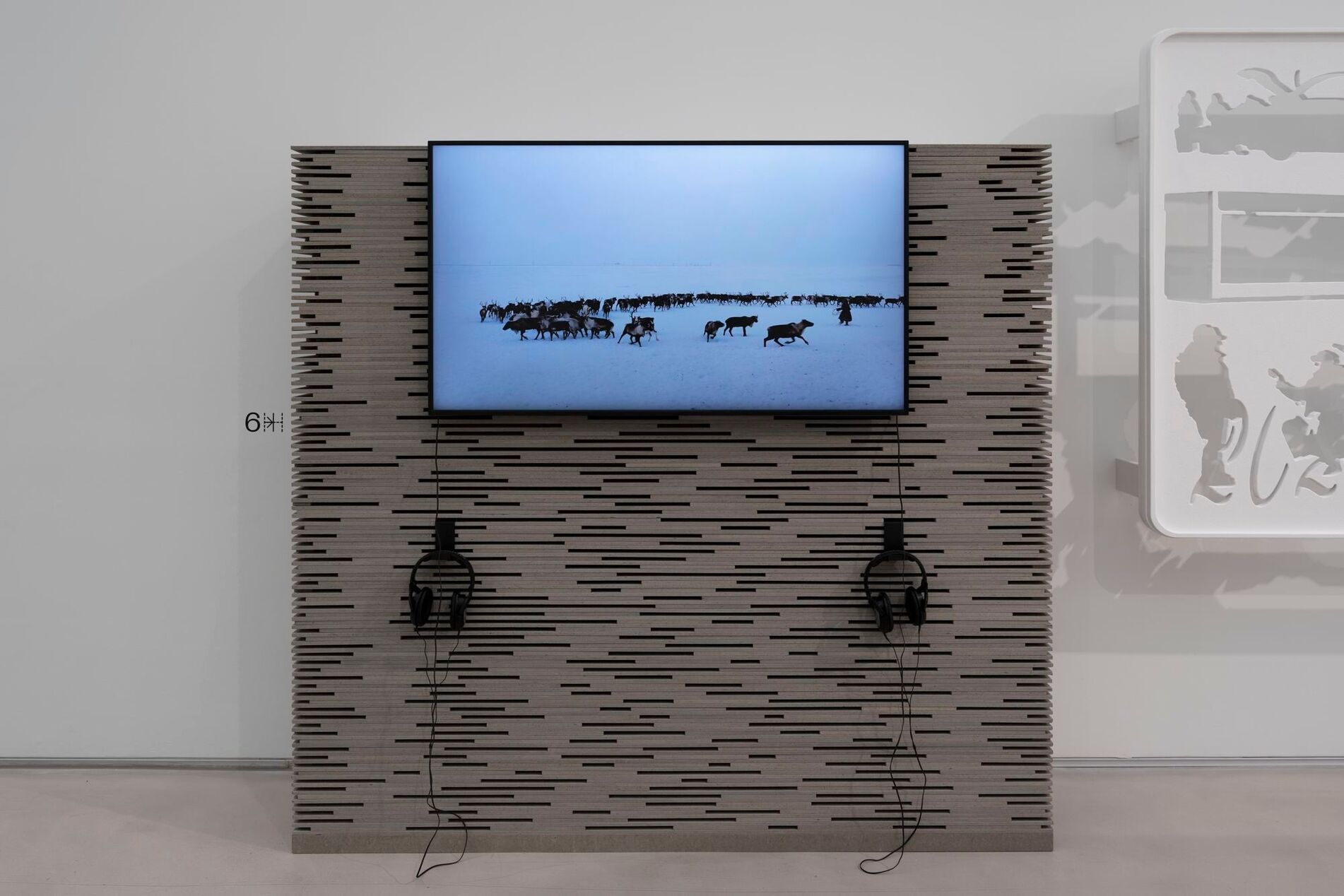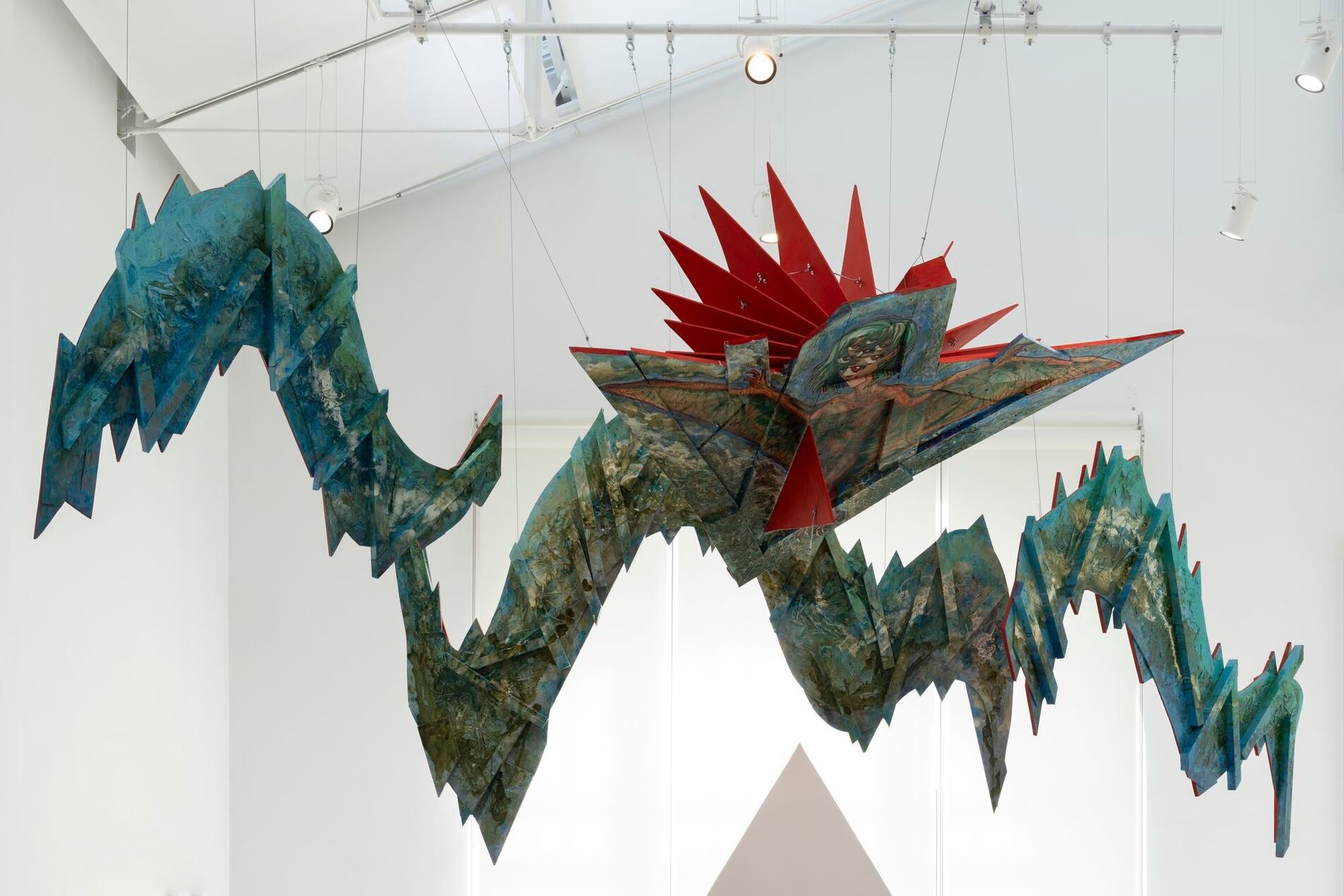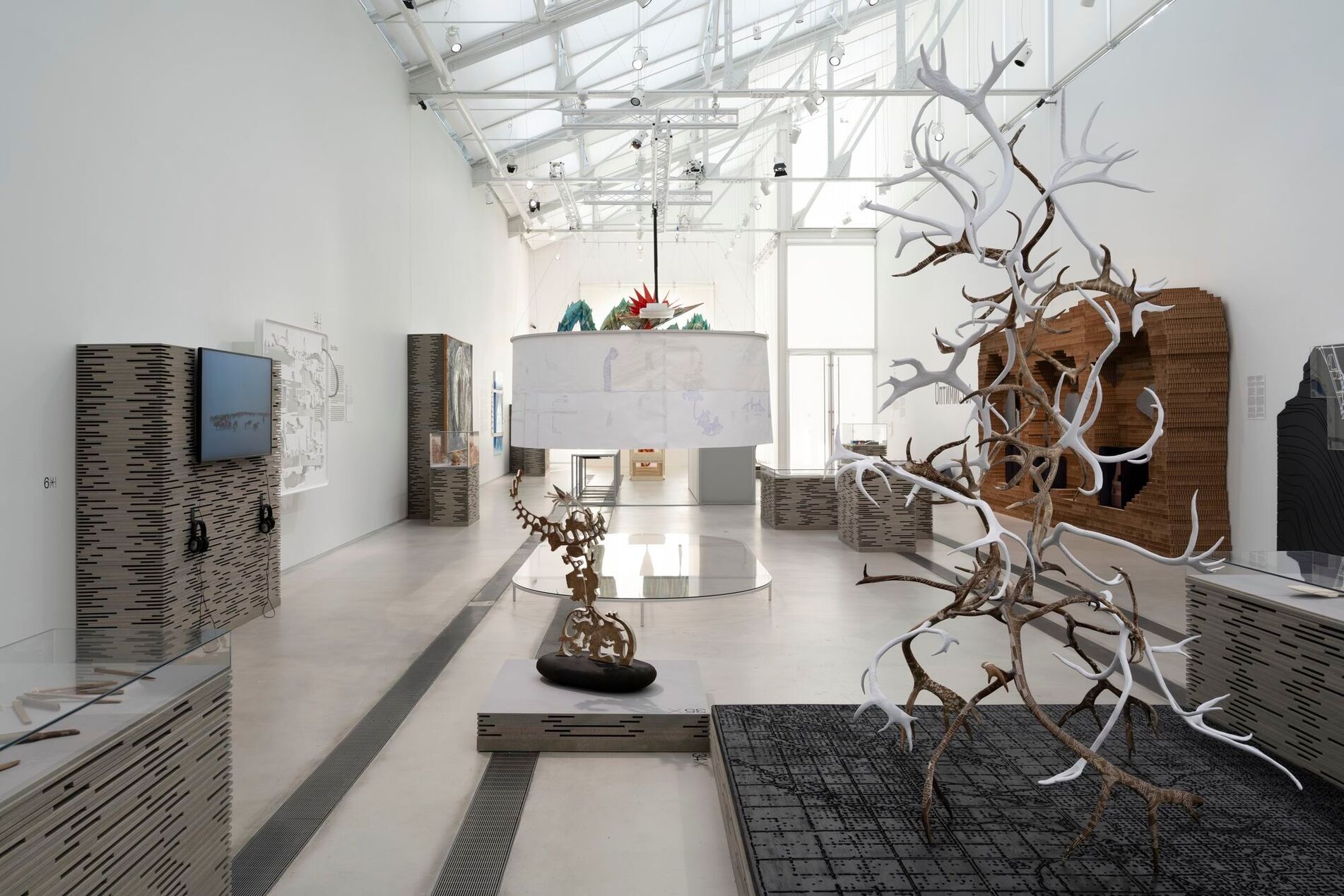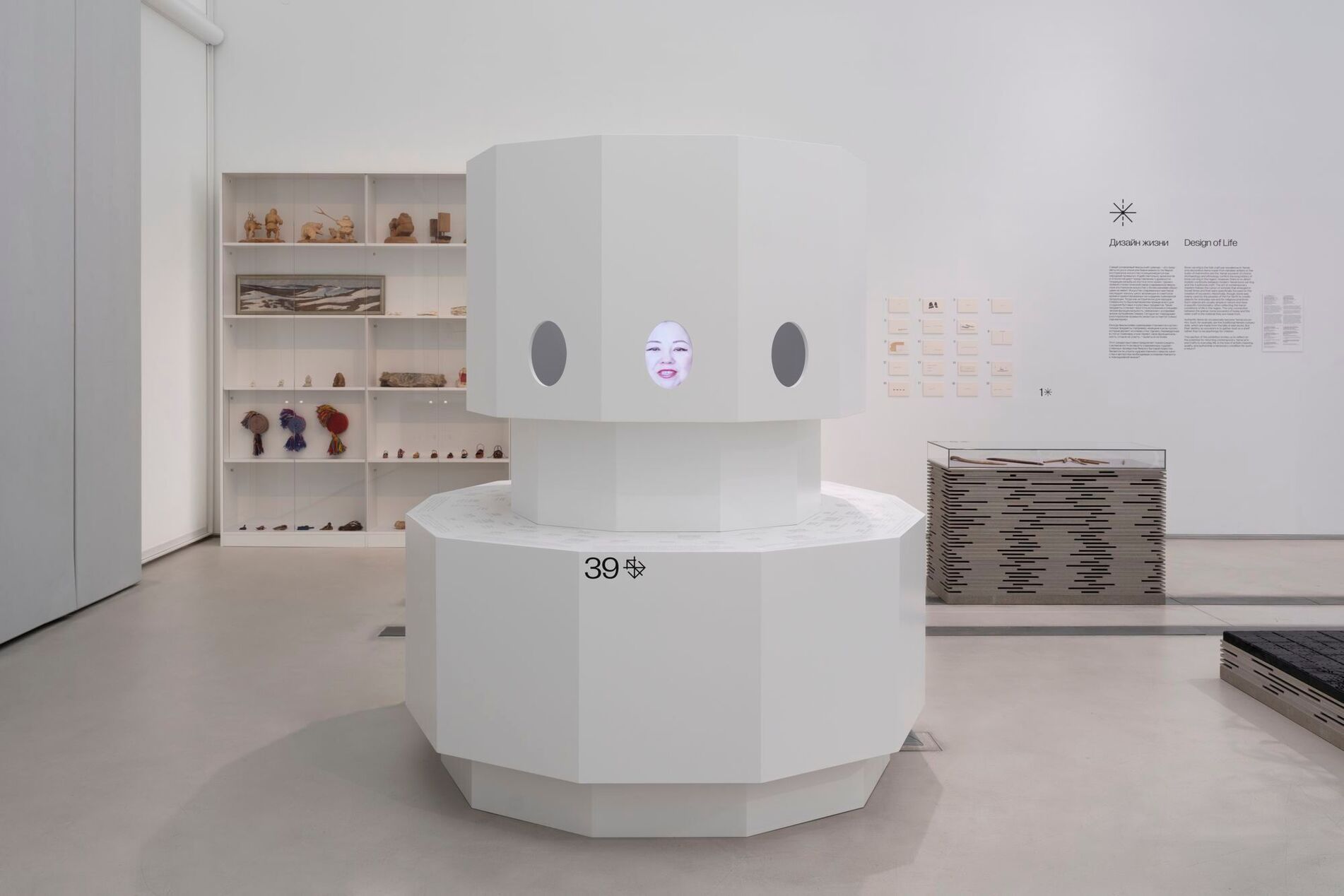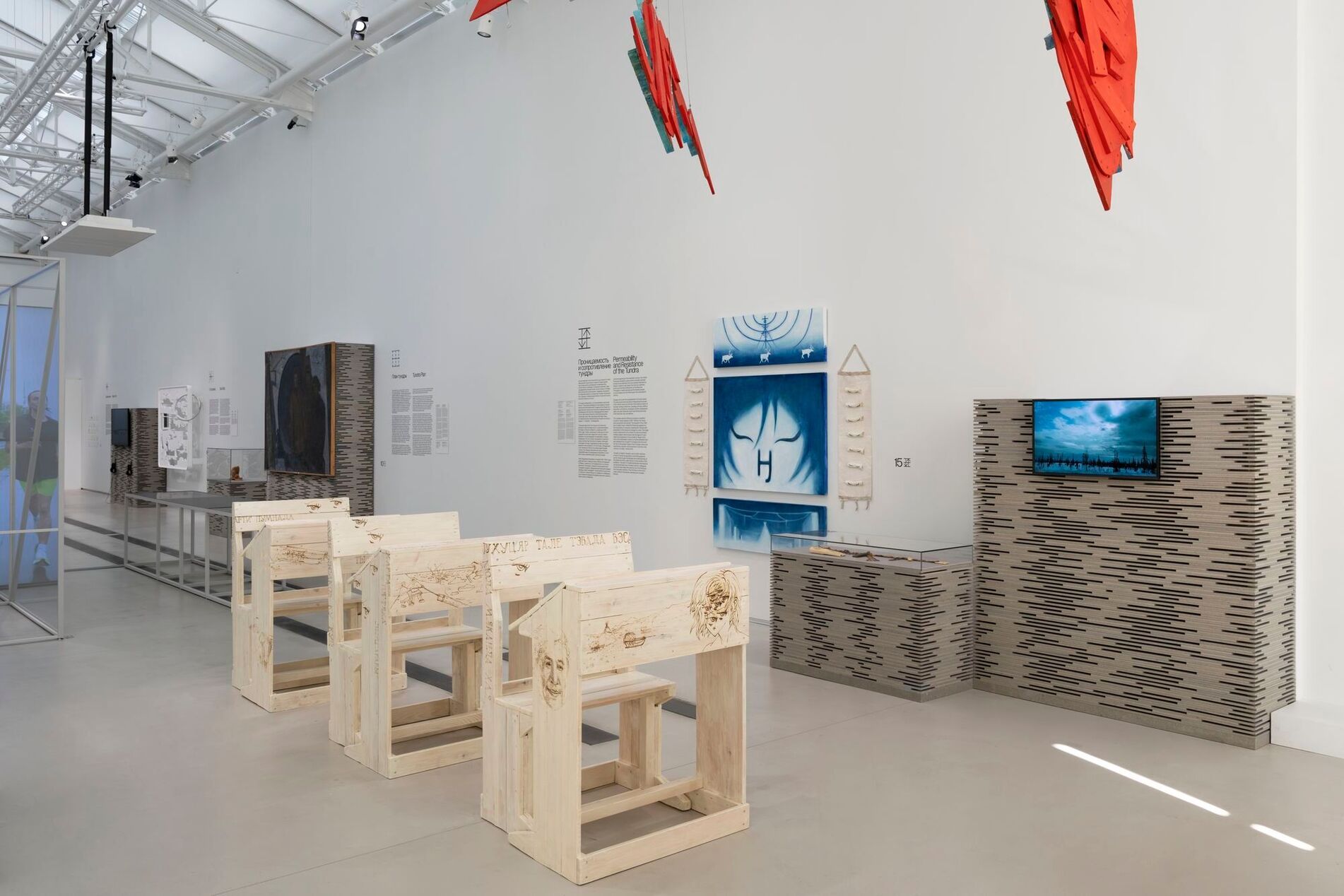The exhibition from the
Yamal Chronotope
- Date:
- 31 Jul–
7 Dec 2025
- Age restrictions
- 12+
The word “chronotope” is used in the human sciences to denote the connection between geographical space and the social and cultural processes that happen in that space. This connection is most salient in locations where life is difficult and where social relationships are dictated by the environment: either by collective adaptation to it or by overcoming the hardships that it imposes.
Illustration: Kirill Gorbunov
The defining feature of the Yamal chronotope is its discontinuity. Human settlements are scattered across a vast territory, with uninhabited space between them. The large rivers that cross the region from south to north have been used as waterways since ancient times, but they continue to hinder the movement of land transport from west to east. Discontinuity between the two universally recognised symbols of the region—the traditional culture of indigenous peoples of the Far North, on the one hand, and the modern oil and gas industry, on the other—also could not be greater. Finally, Yamal as a whole is still perceived by many as extremely remote—as discontinuous with the rest of Russia.
There are two ways of navigating the Yamal chronotope: horizontal and vertical. The horizontal approach submits to things as they are, whether natural phenomena, chains of circumstances or traditional ways of life. The vertical approach attempts to penetrate into things by exploration of territories, extraction of resources, expansion, and consolidation. However, nothing and nobody moves along only one of these two vectors to the exclusion of the other, and the vectors themselves sometimes change direction.
Yamal “souvenirs,” in a surprising way, unite memory of the properties of space and of the processes, which they have been a part of. Objects such as traditional handicrafts, things found in the landscape, even evidence and documents reflect both the experience of a rupture and the will to overcome it. They point to the conditions in which they arose, but, as a rule, they are thereby inserted into a distant, external context.
The Yamal Chronotope project seeks to reveal the structure of the whole and of its small part, revealing the logic of a specific space, of historical time and of global processes in objects that most often exist apart from them. The project is built around a dialogue between authors and experts who come from the Yamalo-Nenets Autonomous Okrug or who live there, on the one hand, and artists from different parts of Russia and the former Soviet Union, on the other hand. They reflect on the various dimensions of the Yamal chronotope, exploring real and symbolic souvenirs of the region.
All photos: Daniel Annenkov
Artists
Agency of Singular Investigations (Stanislav Shuripa, Anna Titova) — Yury Beloselsky — Zhanar Bereketova — Mikhail Dobrovolsky — Anton Gudkov — Galina Guryanova — Fedor Hiroshige — Ivan Istomin — Ekaterina Iushkevich — Gennady Khartaganov — Efim Khorolya — Olga Khorotetto — Zoya Khudi — Alexey Mikulin — Veronika Mogritskaya — Albert Okotetto — Valentina Palamarchuk — Yan Posadsky — Alexey Rumin — Evgeny Salinder — Ivan Savitsky — Kamil Sazhensky — Sonya Zaindevevshaya — Hanna Zubkova
Curators
Yaroslav Aleshin, Sergey Babkin, Alexandra Kiseleva
Public programme curator
Galina Luppo
Architecture
NORMA: Daria Gerasimova, Grigoriy Tsebrenko
Lighting
Ksenia Kosaya
Producers
Varvara Arkhipova, Sasha Chistova, Stacy Dementyeva
Art logistics and registration
Daria Krivtsova, Polina Kuznetsova, Daria Pankevich
Technical team
Andrei Belov, Artem Kanifatov, Pavel Luzhin, Mikhail Sarkisyants
Graphic design
Kirill Gorbunov
Accessibility and inclusion programmes team
Aleksandra Kharchenko, Vlad Kolesnikov, Victoria Kuzmina, Varya Merenkova, Vera Zamyslova
Editor
Daniil Dugaev
English texts
Ben Hooson
Media specialist
Irina Popovich
The exhibition was organised in collaboration with
Salekhard District House of Crafts
Nadym Museum of History and Archaeology
Shemanovsky Museum and Exhibition Complex, Yamalo-Nenets Autonomous Okrug
